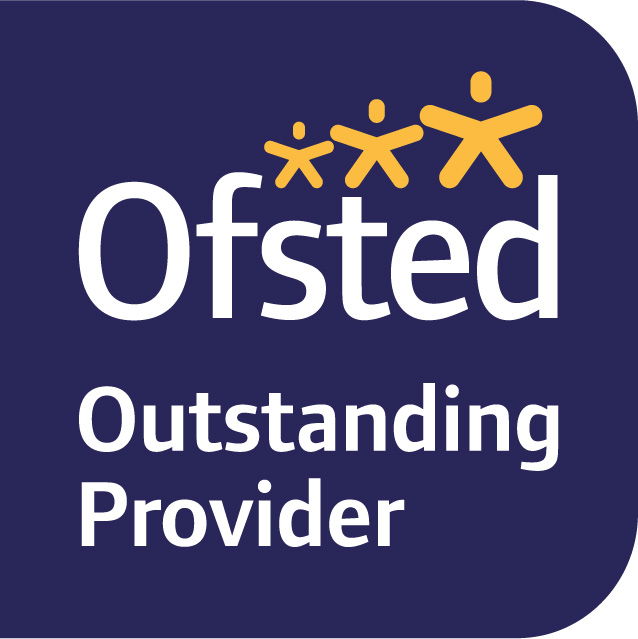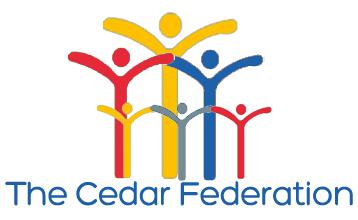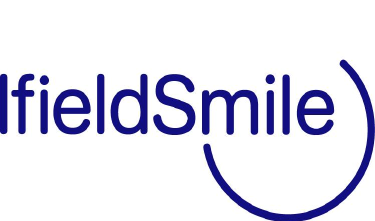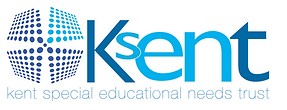Please find below home learning resources:
Maple Class- home Learning 04.01.21
|
Monday |
Tuesday |
Wednesday |
Thursday | Friday |
|
English |
English |
Music |
History/Topic |
Science |
|
pe |
Maths |
Maths |
Dance |
Art |
|
PHSE |
PE enrichment |
Life skills |
|
Food tech |
Choose the work that is appropriate for the ability of your child.
Take photos of your home learning please
Any sheets you complete- make sure you write the date on them and put your name on the back and bring them into school to show us your amazing work ![]()
|
Monda |
|
Phonics Phase 1: Play an interactive game: Phonics Play Sound Starter https://www.phonicsplay.co.uk/resources/phase/l/sound-starters use coloured rice or shaving foam and with an adult try and make the shape to match the sounds s and a while saying the sound ssss aaaaa Phase 2 : Look at the new sounds r 1 letter that make one sound Model this with the word run Have a selection of words with a r at the start row rock rat rake roll ring rich rice rain practice reading them. Resource- r words Phase 3: recap the sound s sh and ch This is a sound called a digraph this is a sound that is made up from 2 letters Practice saying the sound sh and sh and then try and read some words that start with sh and ch Can they write them and say them out loud- without them looking? Mix them up! ship, shop, shed, mash, smash chat chip chop church champ Resource- sh and ch words |
|
Literacy- speaking and listening 1.0: To find out information about reptiles. Starter Explain that our new topic is about reptiles. What is a reptile? Can you think of any reptiles? This week we are going to work towards writing our own reptile profile. To make sure we do this properly, we have to learn about the reptiles ourselves. Look at some info on a website https://www.dkfindout.corn/uk/animals-and-nature/reptiles/what-is-reptile/ Activities Choose a reptile. Parent to help them look up this reptile Parents to read some information about them. Parent to read slowly and clearly information about their chosen reptile. Can they remember its name? Pupil to ask questions such as 'what does it eat?' Read the information to their child whilst they listen. Can they recall the information when you ask them? Have cip of food and places to choose from to check they have listened well for pre verbal pupils. Go Noodle Trolls can't stop the feeling https://www.youtube.com/watch?v= KhfkYzUwYFk PSHE 1.0: To begin to understand how my words and actions make others feel. Starter Listen to the Giraffes Can't Dance story. How do words and actions in the story affect other people? How does it make the Giraffe feel? Why does he feel that way? Giraffes Can't Dance [Giles Andreae, Guy Parker-Rees] ANIMATED - YouTube Activities - speaking and listening- parents to ask. How do we feel when we are in the blue green, yellow or red zone? Do our actions affect others? Why? What can we do to make our friends feel happy? What things make them feel sad? |
|
Tuesda |
|
Phonícs Phase 1: Go on a sound hunt listening out for sounds inside and outside - how many can you hear- adult to write them down. Phase 2: Play matching pairs - reading them as they find them. row rock rat rake roll ring rich rice rain Resource -words 2 sets Phase 3: Look at sh and ch words- cut up the pictures and play matching pairs ship, shop, shed, mash, smash chat chip chop church champ Resource -words and pictures Literacy 1.0: To be able to research factual information about a reptile. Starter Yesterday we were finding out new information about reptiles. Can you remember something new that you learnt yesterday about a reptile using nonfiction texts/reptile profiles? Today we are going to use a range of resources to find out more information about the reptile of our choice so that we can write our own reptile profile. Recap looking at some info on a website https://www.dkfindout.com/uk/animals-and-nature/reptiles/what-is-reptile/ Have a look at the quiz together First you need to choose which reptile you would like to research and write your profile Activity 1: Use a computer to find a photo of the reptile of your choice. Copy and paste the photo on to word. Type the name of the reptile using the keyboard. Print your work. All will need support from an adult. 2: Think of two to three questions that you would like to find out about the reptile. What 3: Use books and fact sheets/reptile profiles to find out the information that answers your questions. Have a go at writing the answers. |
|
If you don't have access to a computer or a printer - your adult could help you write it down Maths 1.0: To be able to read numbers correctly and begin to understand their value. Starter Show a number up to 30 on a piece of paper. Can they say which number it is? Clap and count to the correct amount- if it was the number two, we would clap twice. Explain that place value means that every digit has a value and today we will be looking at what each number is worth. Activity 1: Matching pairs of digit cards and saying the numbers correctly. Have the numbers in words can they read them and match to the right one? These could be written on paper or on post it notes. 2', Count objects and match to the correct digit cards. Start with numbers up to ten then move up to numbers up to 20 and beyond. PE Enrichment Watch and join in an excerise video on You Tube htt s://www. |
|
|
Wednesda |
|
|
music L.O. To sing and dance in time to the beat of the music Watch, sing, dance and play instruments to some songs: You could even make yourself an instrument. See website below: https://feltmagnet.com/crafts/Music-Instruments-for-Kids-to-Make Maths LO: To begin to understand place value. Starter Have a number on a piece of paper Ask your child to find the correct amount of object ( pasta shapes, counters, Igo pieces) to match it- Could extend to 2 digit numbers by adding two pieces together. Activit |
|
|
|
1: Use two dice, with different amounts written on it, both tens and ones. Roll the dice and match/make the correct amounts. ( dice 1: etc dice 2 .
10 and 1 :11 20 23 2: make a line of 10 objects then make a line of 2 objects - what are they together Life skills 1.0: To learn how to care for our teeth. Starter Share IAII about healthy teeth' PowerPoint from Twinkl. Discuss -why is it important to clean our teeth? How else can we care for our teeth? We can care for our teeth by making the right food choices. Activity 1: Model how to brush our teeth properly. How long should we brush our teeth for? We could use a timer to help us. Child to use their toothbrushes to clean their teeth properly. 2: Some foods are bad for our teeth. With support, have a look at different real foods in the house and pictures and decide whether you think they are good or bad for our teeth. Challenge Sequencing activity on how to brush our teeth correctly. Key Questions Why is it important to care for our teeth? How can we care for our teeth? Why is it important to brush our teeth properly? Which foods can be bad for our teeth? |
|
|
Thursda |
|
|
|
Topic/DT 1.0: To make a healthy snack (fruit reptiles). Starter Recap foods which are healthy and foods which are unhealthy. Sort different foods on the IWB. Recap how to hold a knife safely. Today we are going to use a range of fruit to make a healthy snack. |
|
|
key questions
Is fruit healthy or unhealthy?
How do we hold a knife safely?
Why is it important to hold a knife safely?
Dance
1.0: To respond to a topic ( Snakes )
Discuss that in dance we need to have things to inspire movement look up pictures of snakes and other reptiles.
Activity:
Warm up first to high energy tune
Each week we have been influenced by yellow words- movement words linked with snakes
Listen to the music we have been dancing to:
Music track - look up appropriate reptile moving songs and choose one. Dance linked to reptiles moving- practice dance moves ( Next week -can they put 2 of the moves together with a way of traveðling in between.)
DT/Art
Today, you are going to make a paper chain snake to see how snakes can move without legs.
Activity
Make a paper chain snake.
Challenge
Can you colour your snake using a repeating pattern?
Key questions
What is a reptile?
Do all reptiles have legs?
What type of skin do snakes have? How do snakes move?
|
Frida |
|
Phonics Interactive games on the Letters and Sounds website Phase Choose a favourite game linked to your phase Science 1.0: To understand that some reptiles have legs. Starter Watch video about reptiles. Can you point out the reptiles that have legs. How many legs do they have? What reptile is it? Reptiles for Children I Classroom Video - You Tube Activity Labelling a lizard differentiated activity from Twinkl. Challenge Can you write a sentence about a Lizard? tA Lizard has four legs'. Beneath your picture or in your topic book. Key questions Do all reptiles have legs? Food tech Hel |
Maple Class- home Learning 401021
|
Monday |
|
Wednesday |
|
|
|
English |
English |
Music |
History/Topic |
Science |
|
pe |
Maths |
Maths |
Dance |
Art |
|
PHSE |
enrichment |
Life skills |
|
Food tech |
Choose the work that is appropriate for the ability of your child
Take photos of your home learning please
Any sheets you complete- make sure you write the date on them and put your name on the back and bring them into school to show us your amazing work e
|
Monda |
|
|
Phonics Phase 1: Play an interactive game: Phonics Play Sound Starter https://www.phonicsplay.co.uk/resources/phase/l/sound-starters use coloured rice or shaving foam and with an adult try and make the shape to match the sounds s and a while saying the sound ssss aaaaa Phase 2 : Look at the new sounds r 1 letter that make one sound Model this with the word run Have a selection of words with a r at the start row rock rat rake roll ring rich rice rain practice reading them. Resource- r words Phase 3: recap the sound s sh and ch This is a sound called a digraph this is a sound that is made up from 2 letters Practice saying the sound sh and sh and then try and read some words that start with sh and ch Can they write them and say them out loud- without them looking? Mix them up! ship, shop, shed, mash, smash chat chip chop church champ Resource- sh and ch words |
|
|
Literacy- speakinq and listening LCD: To find out information about reptiles. Starter Explain that our new topic is about reptiles. What is a reptile? Can you think of any reptiles? This week we are going to work towards writing our own reptile profile. To make sure we do this properly, we have to learn about the reptiles ourselves. Look at some info on a website https://www.dkfindout.corn/uk/animals•and-nature/reptiles/what-is-reptile/ Activities Choose a reptile. Parent to help them look up this reptile Parents to read some information about them. Parent to read slowly and clearly information about their chosen reptile. Can they remember its name? Pupil to ask questions such as 'what does it eat?'. Read the information to their child whilst they listen. Can they recall the information when you ask them? Have cip of food and places to choose from to check they have listened well for pre verbal pupils. Go Noodle Trolls can't stop the feeling https //www.youtube.com/watch?v= KhfkYzUwYFk PSHE 1.0: To begin to understand how my words and actions make others feel. Starter Listen to the Giraffes Can't Dance story. How do words and actions in the story affect other people? How does it make the Giraffe feel? Why does he feel that way? Giraffes Can't Dance [Giles Andreae, Guy Parker-Rees] ANIMATED - YouTube Activities How do we fee) when we are in the blue green, yellow or red zone? Do our actions affect others? Why? What can we do to make our friends feel happy? What things make them feel sad? |
|
Tuesda |
|
Phonics Phase 1: Go on a sound hunt - listening out for sounds inside and outside - how many can you hear- adult to write them down. Phase 2: Play matching pairs - reading them as they find them. row rock rat rake roll ring rich rice rain Resource -words 2 sets Phase 3: Look at sh and ch words- cut up the pictures and play matching pairs ship, shop, shed, mash, smash chat chip chop church champ Resource -words and pictures Literacy 1.0: To be able to research factual information about a reptile. Starter Yesterday we were finding out new information about reptiles. Can you remember something new that you learnt yesterday about a reptile using nonfiction texts/reptjðe profiles? Today we are going to use a range of resources to find out more information about the reptile of our choice so that we can write our own reptile profile. Recap looking at some info on a website https://www.dkfindout.com/uk/animals-and-nature/reptiles/what-is-reptile/ Have a look at the quiz together First you need to choose which reptile you would tike to research and write your profile about- have pictures to choose from. Activity 1: Use a computer to find a photo of the reptile of your choice. Copy and paste the photo on to word. Type the name of the reptile using the keyboard. Print your work. All will need support from an adult. 2: Think of two to three questions that you would like to find out about the reptile. What 3: Use books and fact sheets/reptile profiles to find out the information that answers your questions. Have a go at writing the answers. |
|
|
If you don't have access to a computer or a printer - your adult could help you write it down Maths 1.0: To be able to read numbers correctly and begin to understand their value. Starter Show a number up to 30 on a piece of paper. Can they say which number it is? Clap and count to the correct amount- if it was the number two, we would clap twice. Explain that place value means that every digit has a value and today we will be looking at what each number is worth. Activity 1: Matching 2', Count objects and match to the correct digit cards. Start with numbers up to ten then move up to numbers up to 20 and beyond. PE Enrichment Watch and join in an excerise video on You Tube https://www.youtube.com/watch?vz Ta j14\2nHHf0 |
|
|
Wednesda |
|
|
|
Music L.O. To sing and dance in time to the beat of the music Watch, sing, dance and play instruments to some songs: You could even make yourself an instrument. See website below: https://feltmagnet.com/crafts/Musíc-Instruments•for-Kids-to-Make Maths 1.0: To begin to understand place value. Starter Have a number on a piece of paper Ask your child to find the correct amount
of object ( pasta shapes, counters, lego pieces) to match it- Could extend to 2 digit numbers by adding two pieces together. Activity |
|
|
|
|
1: Use two dice, with different amounts written on it, both tens and ones. Roll the dice and match/make the correct amounts. ( dice 1: etc dice 2
10 and 1 =11 20 and 3 23 2: make a line of 10 objects then make a line of 2 objects - what are they together -12 Repeat with different amounts. Life skills LO: To learn how to care for our teeth. Starter Share 'All about healthy teeth' PowerPoint from Twinkle Discuss -why is it important to clean our teeth? How else can we care for our teeth? We can care for our teeth by making the right food choices. Activity 1: Model how to brush our teeth properly. How long should we brush our teeth for? We could use a timer to help us. Child to use their toothbrushes to clean their teeth properly. 2: Some foods are bad for our teeth. With support, have Q look at different real foods in the house and pictures and decide whether you think they are good or bad for our teeth. Challenge Sequencing activity on how to brush our teeth correctlyn Key Questions Why is it important to care for our teeth? How can we care for our teeth? Why is it important to brush our teeth properly? Which foods can be bad for our teeth? |
|
|
Thursda |
||
|
Topic/DT LO: To make a healthy snack (fruit reptiles). Starter Recap foods which are healthy and foods which are unhealthy. Sort different foods on the IWB. Recap how to hold knife safely. Today we are going to use a range of fruit to make a healthy snack. |
||
|
Key questions Is fruit healthy or unhealthy? How do we hold a knife safely? Why is it important to hold a knife safely? Dance 1.0: To respond to a topic ( Snakes ) DiscuSS that in dance we need to have things to inspire movement look up pictures of snakes and other reptiles. Activity: Warm up first to high energy tune Each week we have been influenced by yellow words- movement words linked with snakes Listen to the music we have been dancing to: Music track look up appropriate reptile moving songs and choose one. Dance linked to reptiles moving- practice dance moves ( Next week -can they put 2 of the moves together with a way of travelling in between.) DT/Arf Today, you are going to make a paper chain snake to see how snakes can move without legs. Activity Make a paper chain snake. Challenge Can you colour your snake using a repeating pattern? key questions What is a reptile? Do all reptiles have legs? What type of skin do snakes have? How do snakes move? |
|
Frida |
|
Phonics Interactive games on the Letters and Sounds website Phase 1,2,3 Choose a favourite aame linked to your phase Science LO: To understand that some reptiles have legs. Starter Watch video about reptiles. Can you point out the reptiles that have legs. How many legs do they have? What reptile is it? Reptiles for Children I Classroom Video - YouTube Activity Labelling a lizard differentiated activity from Twinkl. Challenge Can you write a sentence about a Lizard? 'A Lizard has four legs'. Beneath your picture or in your topic book. Key questions Do reptiles have legs? Food tech Hel |















